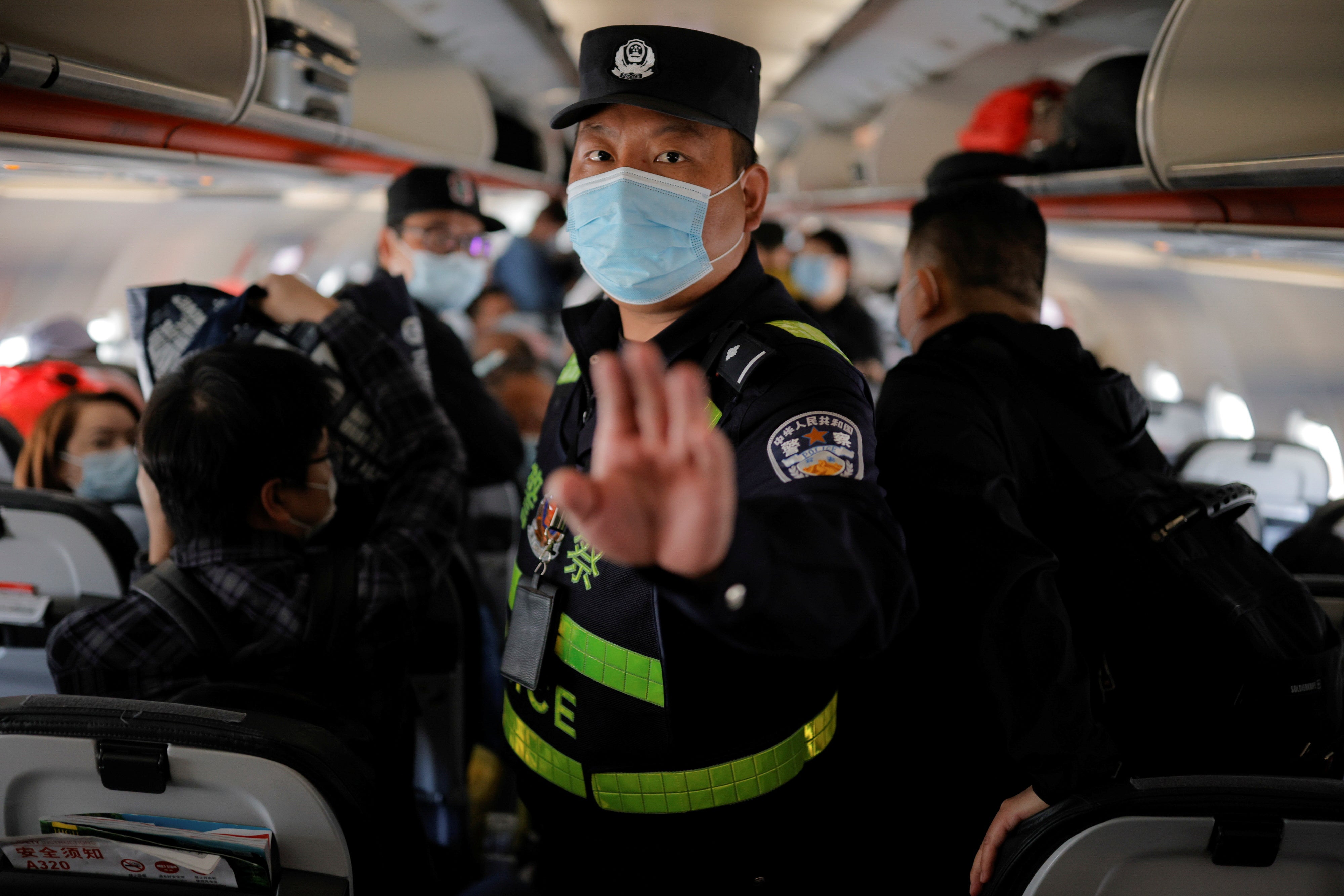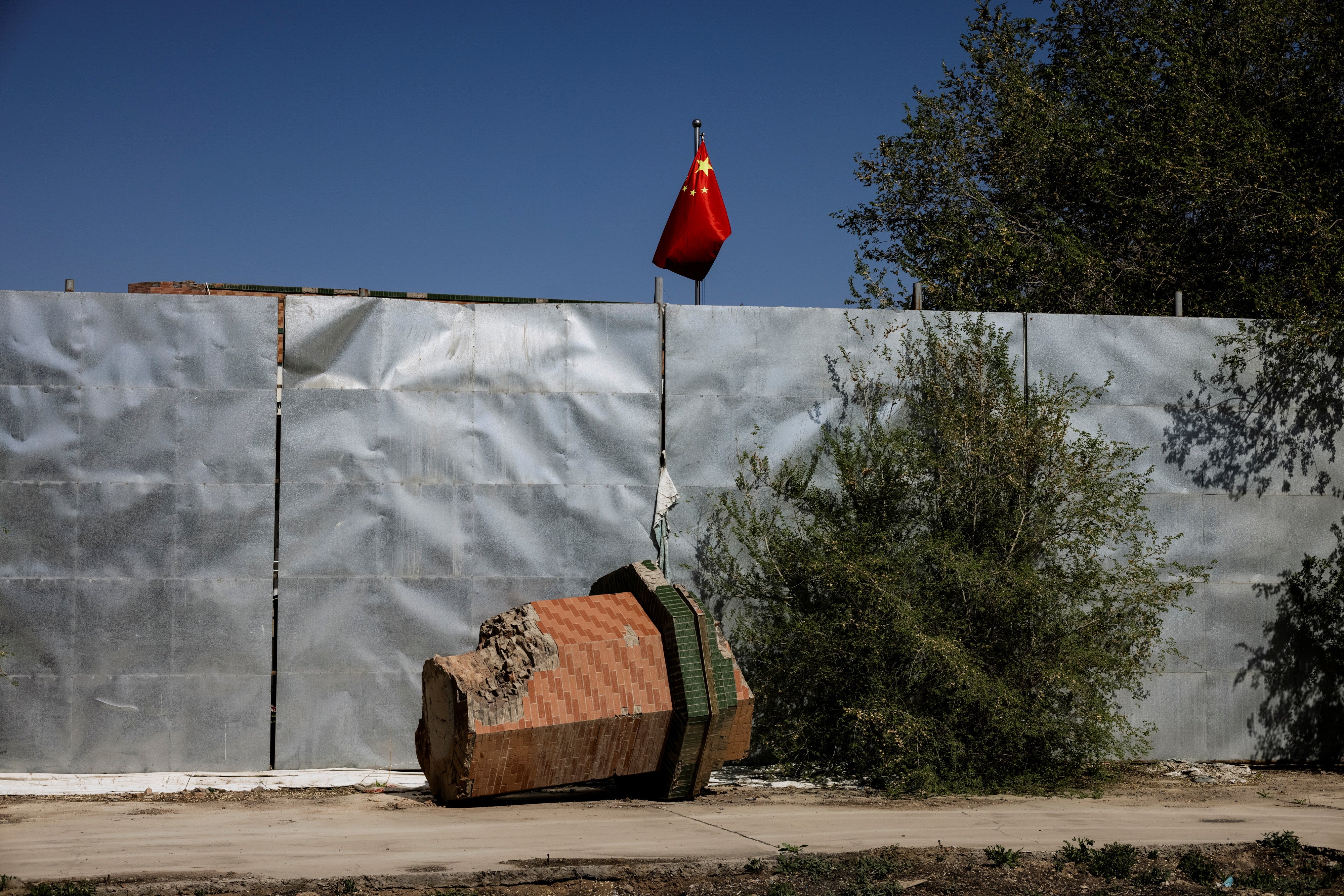In China’s new Xinjiang: patriotic tourism, police and propaganda
Moving away from the crackdown that saw a million Uyghurs detained, the communist nation wants to build a multi-ethnic region attractive to tourists. But the reality is much sinister, reports Cate Cadell

Your support helps us to tell the story
From reproductive rights to climate change to Big Tech, The Independent is on the ground when the story is developing. Whether it's investigating the financials of Elon Musk's pro-Trump PAC or producing our latest documentary, 'The A Word', which shines a light on the American women fighting for reproductive rights, we know how important it is to parse out the facts from the messaging.
At such a critical moment in US history, we need reporters on the ground. Your donation allows us to keep sending journalists to speak to both sides of the story.
The Independent is trusted by Americans across the entire political spectrum. And unlike many other quality news outlets, we choose not to lock Americans out of our reporting and analysis with paywalls. We believe quality journalism should be available to everyone, paid for by those who can afford it.
Your support makes all the difference.Heavy security and state surveillance were never far away on a recent Chinese national holiday as visitors to Xinjiang enjoyed new theme-park-style centres showcasing the region’s Muslim Uyghur culture.
Tourists smiled and posed in traditional dress on camels for photographs amid billboards extolling the ruling Communist Party.
China is trying to move on from the security crackdown in which more than a million ethnic Uyghurs have been detained in re-education centres since 2016, according to UN experts and researchers – part of what Beijing has described as an effort to eradicate extremism.

It wants to build a patriotic, multi-ethnic region that is secular, Mandarin-speaking and attractive to domestic tourists who spend trillions each year on group tours and curated experiences.
Beijing says reporters are able to travel freely in Xinjiang but we were tailed by a rotating cohort of plain-clothed minders who were rarely out of sight, day and night, during a recent two-week trip to the region.
We were unable to establish who the individuals were; they walked away when approached and did not respond when addressed.

Within an hour of reporters leaving their hotel in the city of Kashgar through a back gate, barbed wire was erected across the exit and fire escapes on their floor were locked.
Upon arrival in Urumqi, Xinjiang’s capital, uniformed police entered the plane and escorted the reporters on to the Tarmac in front of other passengers. They photographed the reporters’ credentials and recorded information including the hotel they planned to stay in.


China’s foreign ministry and the regional government in Xinjiang did not respond to requests for comment on the specific security measures or on their ambitions for tourism in the region.
It said: “Regarding foreign journalists’ coverage in Xinjiang, China has always maintained an open and welcome attitude,” adding that journalists must strictly abide by Chinese law in the region.
Some new attractions in southern Xinjiang are just a short drive away from the camps and prisons built to service Beijing’s anti-extremism drive.

In the city of Kashgar, as Uyghur musicians serenaded tourists from the balcony of a picturesque tea shop, about a dozen police carrying shields and batons emerged from surrounding alleyways in an afternoon shift change.
In the city streets and countryside of Xinjiang, Communist Party propaganda urges loyalty and ethnic unity.
Billboards show President Xi Jinping standing among a crowd of smiling Uyghur children. Murals on the walls of houses in one small village outside Hotan warn against the evils of extremism and depict happy mixed Uyghur and Han families.


A banner in a residential building in Urumqi read: “Build ethnic unity, build a Chinese life, build a better Xinjiang.
Another on a mosque wall in Changji city reads: “Eternally strengthen every ethnic group’s approval of the motherland.”
The tourist drive is mostly targeted at domestic travellers, offering Xinjiang a new revenue source as the west imposes sanctions. China expects more than 200 million visitors to Xinjiang this year, up from 158 million last year, and 400 million by 2025.

The west accuses China of committing what amounts to genocide in Xinjiang in recent years, citing the internment programme, forced sterilisations and mass labour transfers.
Beijing denies accusations of genocide and says its policies in Xinjiang were necessary to stamp out separatists and religious extremists who plotted attacks and stirred up tensions between Uyghurs and the Han, China’s largest ethnic group.
In Hotan, a majority-Uyghur prefecture heavily impacted by the internment programmes, a new “old city” is under construction.

Every few yards, posters show homes before they were demolished and replaced by buildings in keeping with the architectural style of the tourist developments.
They read: “Old appearance turned into new, feel gratitude for the Communist Party.”
Photography by Thomas Peter, Reuters
Join our commenting forum
Join thought-provoking conversations, follow other Independent readers and see their replies
Comments